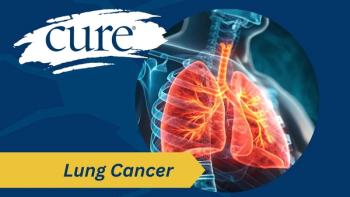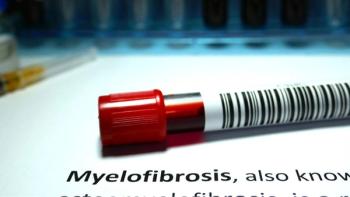
On Twitter, MPN Patients and Physicians Connect in Real Time
CURE recently interviewed Naveen Pemmaraju to discuss the unique aspects of the MPN community, the pitfalls of social media and the importance of patients and physicians interacting.
Social media allows for people from around the world to communicate with one another like never before. One community called MPNSM (myeloproliferative neoplasms social media) brings together patients and physicians on Twitter to converse about updates in the field, treatments, symptoms and more.
CURE recently interviewed Naveen Pemmaraju, one of the cofounders of the
Could you provide me with an overview of the #MPNSM community? What is it all about?
Pemmaraju is an assistant professor in the Department of Leukemia, Division of Cancer Medicine at The University of Texas MD Anderson Cancer Center. In September 2015, Pemmaraju was the lead author on a paper published online in the journal
I think for patients — especially those who have rare diseases and rare cancers, which myeloproliferative neoplasms still do fall under that category — there's still a dearth of usable information out there. The internet is great and there's a lot of academic journals, but there's a lot of misinformation. There's not a lot of chance to interact; it's static information and it's limited. Social media allows patients, patient advocates, people in the media, pharma, investigators, community doctors — all the stakeholders — to get together in an unprecedented way. It's real-time, there are no barriers, everyone is accessible to everyone, it's archived, public, it’s detailed. Social media gives the chance for groups of people to talk that almost would never have a chance to meet in real life.
Social media has become a way to create new content and new information. This information can be for the lay public, investigators or the general treating physician community. We've been mesmerized by this.
What makes the MPN community unique?
Why is it important for patients and physicians to interact in this way? Obviously, patients talk to the physicians in the office, but why do you think it's important that they interact on social media?
In creating the #MPNSM community, it's allowed me and my cofounders to reach out to others and they've been able to reach out to us. At conferences, we always see a big spike in activity. This is when we see the true manifestation of the hashtag — debating and discussion of ideas in real time. It's a dynamic conversation.For patients with cancer and their families, their lives have been turned upside down. When it comes to rare cancers, our heart really goes out to them. At a community or physician practice, they may only see one or two MPN patients per year. The MPN community is special because it's comprised of people who live with their disease for decades. #MPNSM is a way for patients to keep up with the changing biology of the disease, treatment updates and clinical trials, all in a real-time format. Patients with MPNs, in general, are savvy with technology and look to educate themselves. Traditionally, you're right, people have interacted with other patients or their physicians differently. Support groups and town hall-type meetings are more traditional ways of interacting, but they require quite a bit of logistical planning. With social media — especially with Twitter and #MPNSM — it allows people to be all over the world and interact, in the comfort of their own homes, on a laptop or on an iPhone. Again, everything is archived. You can tweet something and someone may respond two days later. For patients, it gives them another avenue of processing the infinite amount of information out there. It also gives them a chance that they don't have in the office or clinic to interact with a number of experts and investigators. Finally, it allows for a conversation, even if it's over a matter of days.
You've mentioned trial data and new treatments under investigation. What other topics are discussed — side effects, therapies that might not even be in MPNs yet?
Investigator to investigator, I've met several of my colleagues through Twitter. We all met virtually and then met later at conferences, leading to collaboration and a general collegiality about the field that used to take years of meeting at conferences. There's an ongoing conversation.Symptom profile, symptom burden and side effects are all discussed. Symptom burden affects real patients in real life situations: mood disturbances, time lost on the job, productivity lost, sexual and intimacy problems, physical problems and more. This is something that's very important and discussed frequently. It may not be a scheduled meet-up time necessarily, but it's more of an ongoing conversation.
Discussion of new and novel therapies are also discussed — what are the latest developments?
What concerns you about patients and physicians interacting on social media?
I've also seen discussion around new papers that are coming out. Papers that are discussing more of the academic aspects of the disease — biological topics, translational, lab-based research.With social media being so new, a lot of rules are being understood and developed as we speak. The no. 1 concern always has to be patient confidentiality and privacy, both on the patient's end and the physician's end.
The other concerns surround the providers and clinicians. I think some clinicians are wary of joining social media, from a medical-legal perspective. As with any form of media, one needs to think about what one is saying, because it is archived and will live forever.
Has #MPNSM changed the way you think about treating patients? Has it affected the way you practice?
The final concern relates to one's organizations, institutions and conflicts of interest. A given expert probably works with not only their university or institution and patients, but also pharmaceutical companies, advocacy groups and more. Understand, navigating and organizing around all of these things is a very important area as we move forward with social media. I always advise clinicians and experts about these potential pitfalls as they're starting out on Twitter.It's affected practice because physicians and clinicians are being asked about this — patients are asking their physician if they’re on social media, if they saw the latest post on a topic and so on. It's something patients are aware of.
Patients with rare diseases such as MPNs are able to connect faster and more reliably with patients, rather than waiting for a support group at one's institution or looking all over the internet. #MPNSM allows patients to connect faster with one another.
What would you say to someone — a patient, physician, caregiver or nurse — who's thinking about joining this conversation on Twitter?
Again, we investigators are able to put together fruitful collaborations through just this channel. It's generated new ideas, papers, projects, discussions and new ways of looking at the field.This is something that's going to be extremely important over the next few years. As social media use continues to rise, I encourage folks to get familiar and get on there. There are a couple of key points:
It's not as hard as it you think it is. It takes about a minute, at most, to set up a Twitter account. You get a handle name, a profile, and the best thing to do first is to follow key people that you want to keep up with their content. Through that, you'll learn how to compose your own tweet and learn what information is out there.
Be wary. Know that everything you tweet and put out there is archived and permanent.
Tweet about what you know, what you're passionate about. If you're passionate about myelofibrosis and side effects, tweet about that — articles, new information, symposiums about that.
What's next for social media and the MPN community?
You can spend as much time with Twitter as you want or as little time as you want. It's definitely a great way to be part of the conversation.That question allows me to daydream about the future. I think the future is quite bright for this medium. I envision broadening this out to every patient on all continents everywhere. I think it'd be exciting to establish regular tweet chats to feature experts on a monthly basis. I'm working to establish that now, and it's something we've seen in other disease types, other hashtag communities.
I envision that eventually, information is so widely available that even if a person isn't attending a conference — say it's in Rome or Paris — the level of tweeting is at the point where that person can feel like they're actually at the conference, getting the information, opinions and controversies in real time. My vision is real time conversations all over the world, any time of the year, where nobody is left out of the latest and breaking information.




